TREES WE LOVE TO LOVE
BONSAI
The Bonsai is an ornamental, artificially dwarfed tree grown in a pot. It is known for its tranquility and it brings a natural and peaceful feel to any living space. These trees can be kept inside or outside, but if it is kept outside, it should be protected from extreme sun or freezing temperatures. Bonsai trees come in multiple styles, shapes, and forms with different trunk shapes and bark finishes. Pruning is critical to keeping the tree small and unique techniques are used to maintain and support the growth of these mini trees.
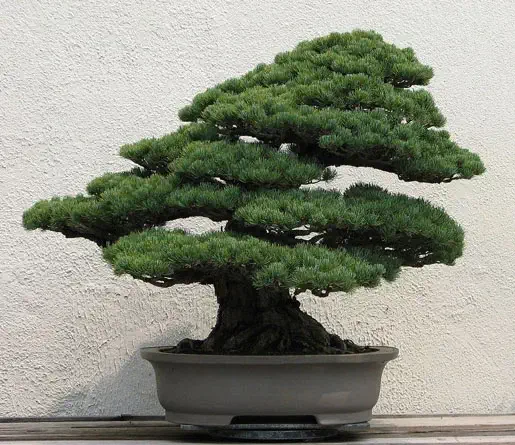
Bonsai
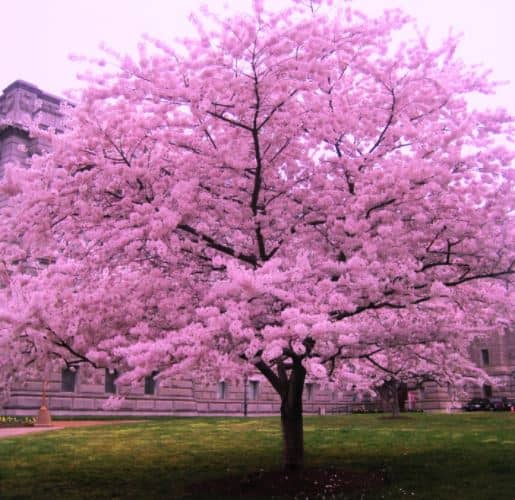
Cherry Blossom
CHERRY BLOSSOM
Cherry trees first came to the United States in 1912 when they were sent by Japan as a gift to show friendship and goodwill. There are over 200 varieties and they grow approximately 25 feet tall with a 12-foot wide canopy. The trees produce beautiful pink flowers that signal the start of spring and are said to represent the fragility and beauty of life. Though the trees were bred for flowers, some of them do produce small, very sour cherries. Cherry trees are only in bloom for a week or two and the trees themselves only live 30-40 years. The National Cherry Blossom Festival in Washington, D.C. attracts millions of people every year to watch thousands of these trees blossom.
CREPE MYRTLE
You know its summer in the South when the temperature is over 100 degrees and the Crepe Myrtles are in full bloom. Crepe Myrtles, known as the “lilac of the South,” range in size from dwarf selections that grow less than 3 feet tall to upwards of 30 feet. The bark maintains a pretty cinnamon color year-round and bloom colors include vibrant ranges of pinks, purples, reds, and whites. A stunning new variety (and our favorite) called Black Diamond has black leaves that pop against deep red blooms. Crepe Myrtles needs lots of sun as even light shade can prevent full blooming. The tree can stand alone or be planted together to create a hedge for privacy.
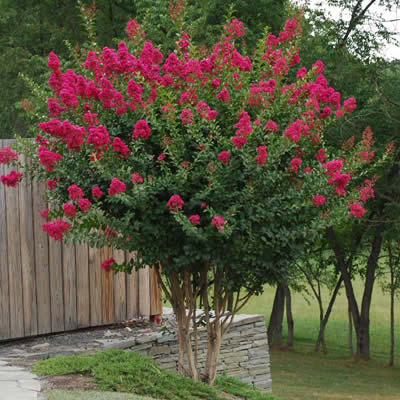
Crepe Myrtle
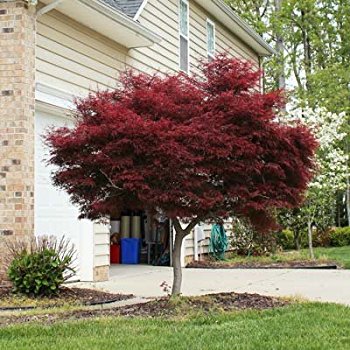
Japanese Maple
JAPANESE MAPLE
Extremely popular with landscape architects, Japanese Maples come in a variety of shapes, sizes, and colors. The classic Japanese Maple has deeply cut, feathery red purple leaves grows up to approximately 8 feet, and has a graceful weeping habit. Japanese Maples require some shade and protection from extreme elements, though they tolerate the humidity well. They can add a pop of color and elegance to any landscape.
RAINBOW EUCALYPTUS
The Rainbow Eucalyptus is a very distinct tree. It is found in tropical forests and in the U.S., can grow up to approximately 125 feet. The most outstanding feature of the tree is its bark. The outer layer of the tree’s bark peels away to reveal a vibrant green layer underneath. As time passes, the bright green fades to a darker green, then to blue, purple, pink, orange, and maroon before returning back to brown and beginning the process all over again. The tree displays a rainbow of colors at the same time because different layers peel away at different times. The tree has an invasive, raised root system which can cause property damage so its best suited for open landscapes rather than residential areas. The Painted Forest on the iconic Road to Hana in Maui, Hawaii is full of these stunning trees.
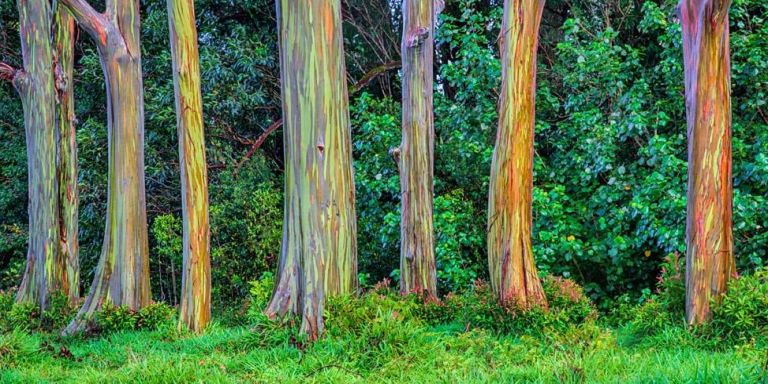
Rainbow Eucalyptus
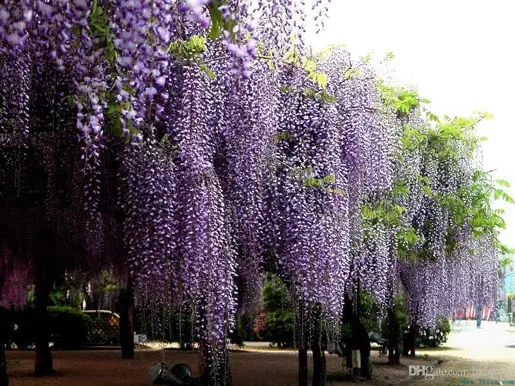
Wisteria
WISTERIA
Technically a type of flowering vine, the Wisteria blooms in the spring and has large, drooping clusters of purple blooms with an ever so sweet scent. Other hues include blue, pink, and white. The world’s largest known Wisteria is in California and measures more than 1 acre in size! Wisteria can be rather aggressive and requires sturdy support and regular pruning to keep it under control. It climbs by twining its stems around any available support and makes decorative accompaniments to arbors, trellises, and porches providing pure Southern charm.
CONTACT A TULSA TREE SERVICE
Contact Jake, an ISA Certified Arborist, at TREES BY JAKE to help take care of the trees that you love! The TREES BY JAKE crew is fully qualified to handle any type of tree work, including removal and maintenance, and we are fully insured for both liability and workers’ compensation. Contact us today at 918-500-9955.
Don’t forget to check us out on Facebook, Instagram, and Twitter!
Contact Your
Tulsa Tree Service
TREES BY JAKE has been providing tree removal services in Tulsa for over a decade. Jake is a Tulsa Certified Arborist and we have a variety of equipment to safely and efficiently remove trees. Call or text us today for your free estimate at 918-500-9955 and don’t forget to check us out on Facebook, Instagram, and Twitter!